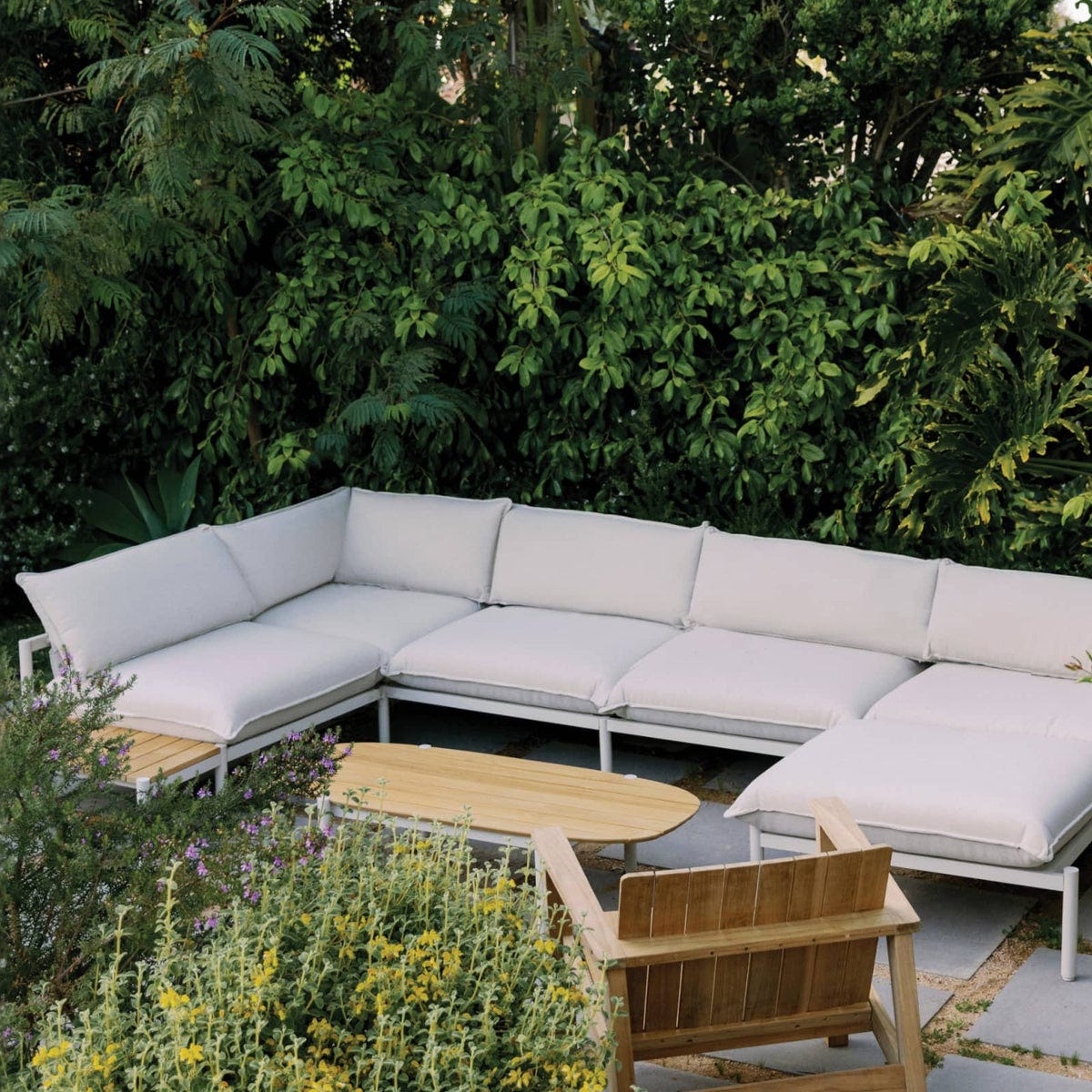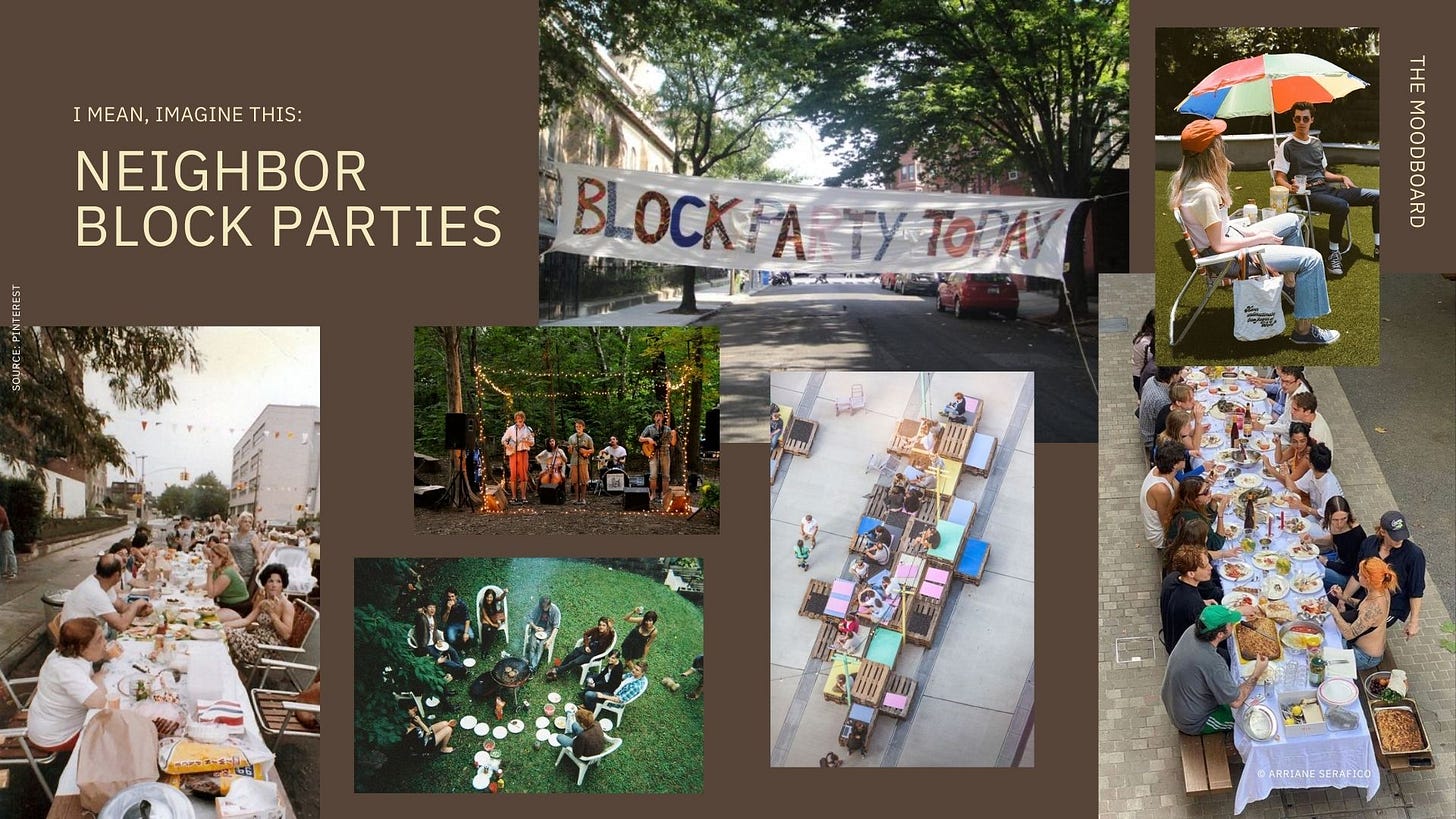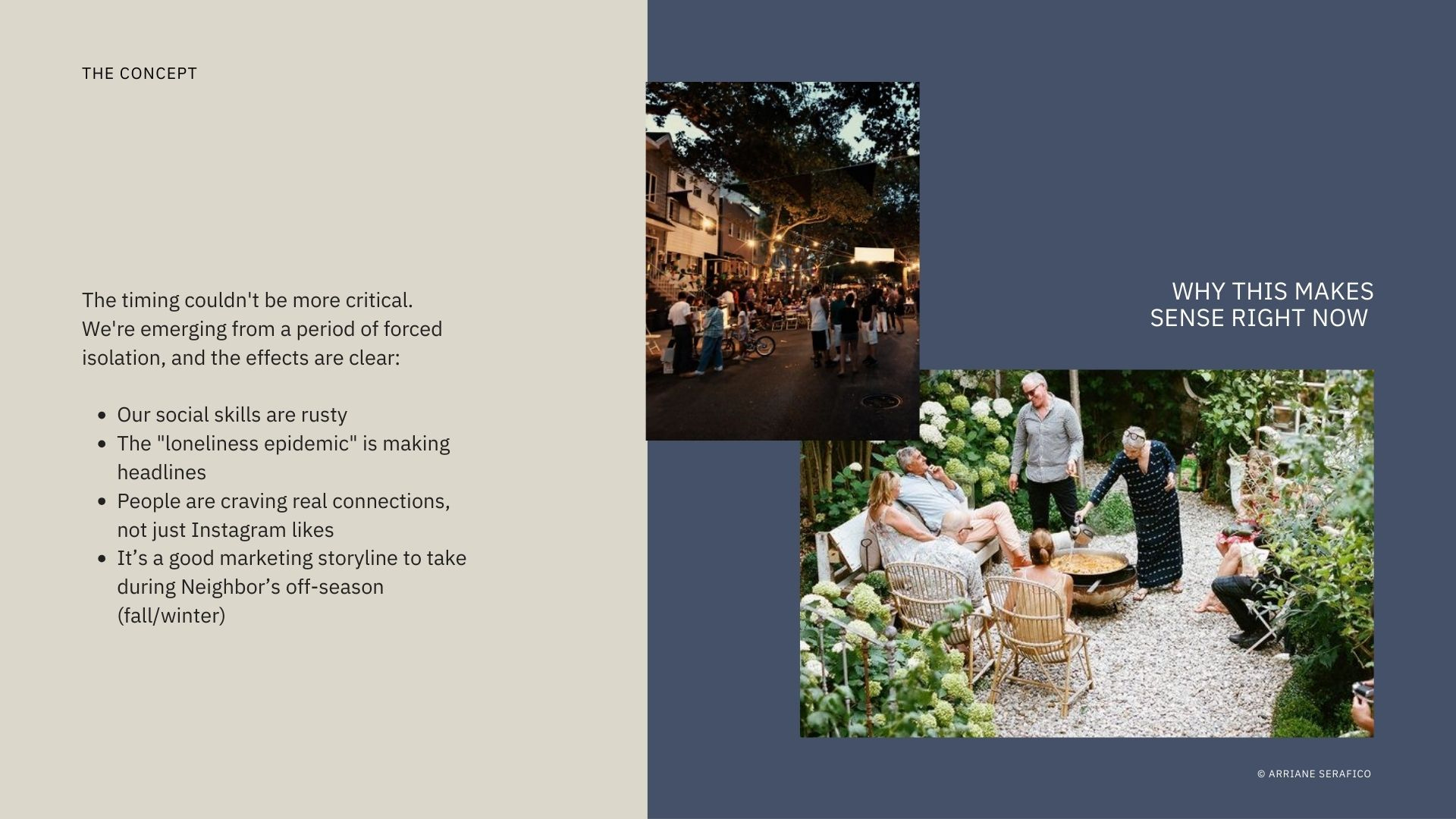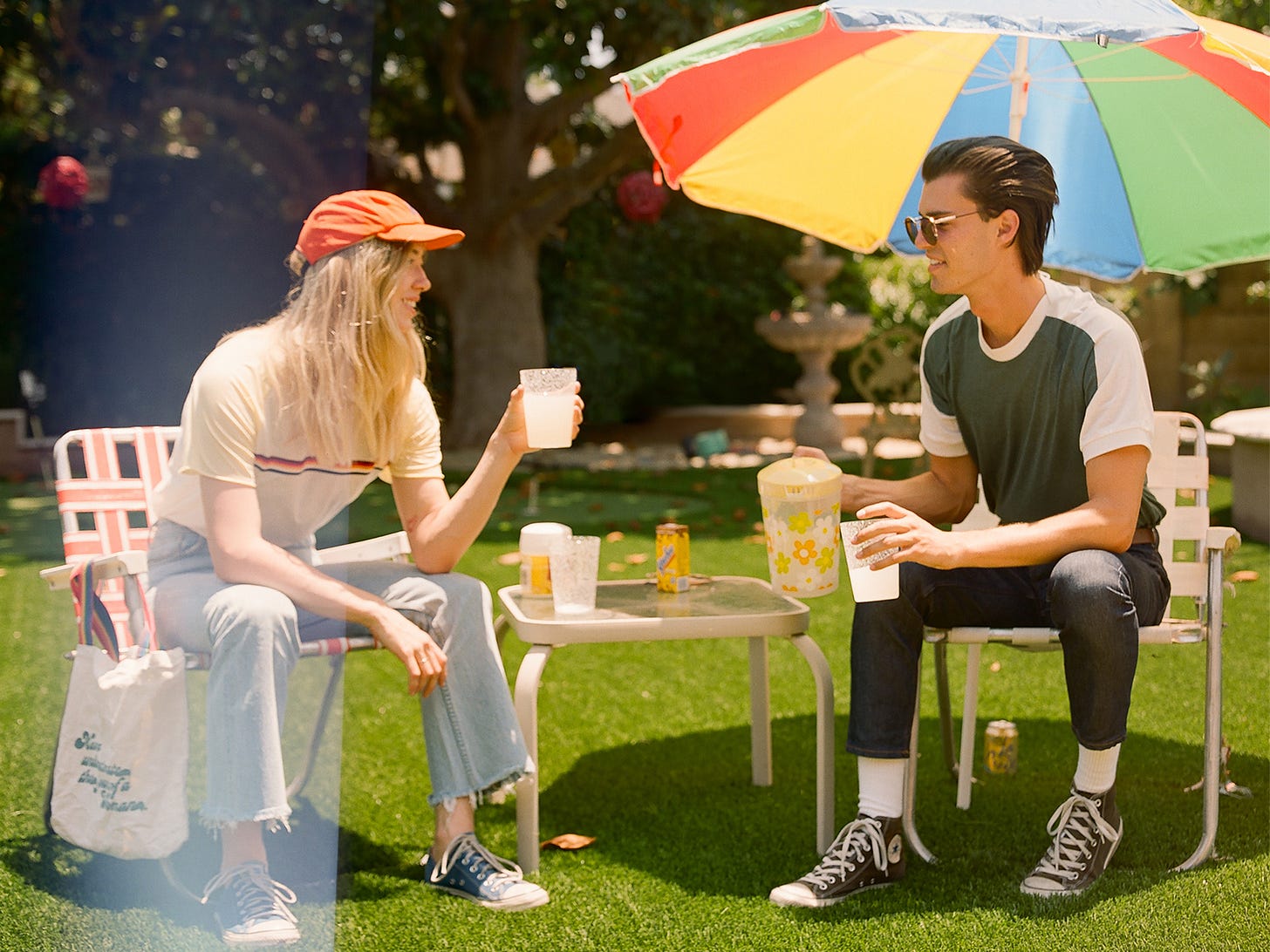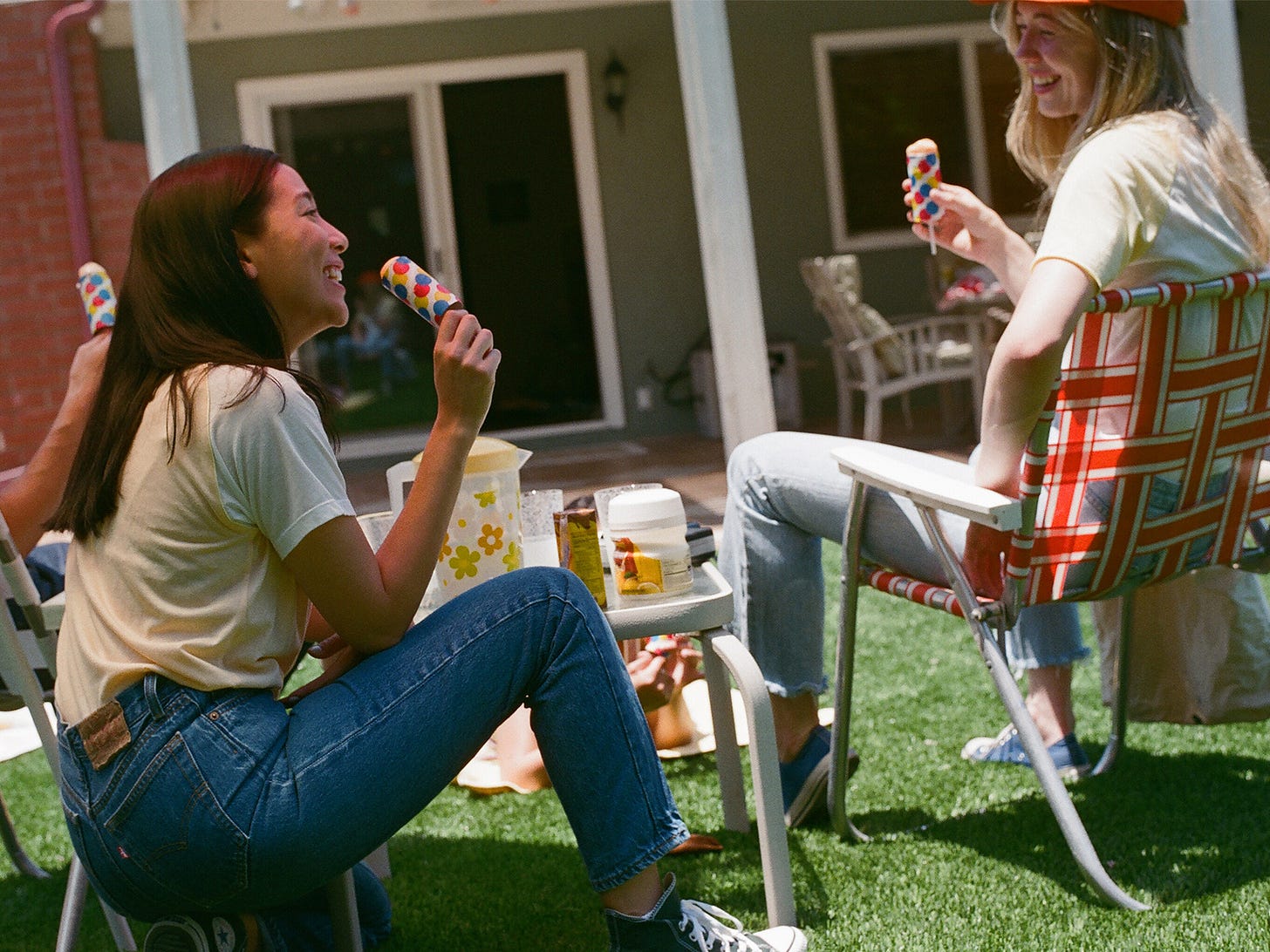A Brand Strategist's Take on Outdoor Furniture: What's Missing in the Market
Reimagining Neighbor: The Outdoor Furniture Brand That Could
With current trends in the housing market, childcare, remote work — there is so much space for brands to champion neighborhood life that's connected, engaged, and a lot less isolating.
For the past two years, Neighbor’s outdoor furniture has been at the top of my wishlist for outdoor furniture.
Their designs are simple but thoughtful, the incredible craftsmanship shows, and the quality looks like it’ll actually last for more than one season (I’m looking at you, Wayfair).
But also - from a brand strategist’s POV - it's one of those brands with a name so good, you can't help but wonder about all the stories they could tell and the impact they could make.
Neighbor's heart is clearly in the right place. Their website and emails have thoughtful, personal touches that hint at a deeper purpose. Their About Page reads:
"Creating space to feel more connected and present is the why behind everything we do at Neighbor. We believe that spending quality time with family and friends isn't just for special occasions. Our design-driven, modern outdoor furniture is made for everyday moments, big and small, so you can reimagine home, outdoors."
It's a lovely sentiment, but in the crowded outdoor furniture market, it's a whisper when it could be a rallying cry.
Neighbor's brand strategy is fertile ground for becoming an opinionated, impactful brand that could redefine suburban living.
🪑🏹 The Outdoor Furniture Hunger Games
The outdoor furniture market hosts a buffet of options:
The Costco-Wayfair-World-Market Continuum: Convenient and affordable; perfect for those who view patio furniture as slightly more… disposable.
The Legacy Brands Mirage: More “established” brands like Crate & Barrel, West Elm, CB2 offer the illusion of investment pieces, but often turn out to be Wayfair with better art direction.
Article & IKEA: The "I'm design-conscious but I spend all of my money on my mortgage/rent and home repairs" option.
Neighbor, Outer, Restoration Hardware, a few new DTC players: All on the higher end or what they call “affordable luxury”, mostly competing on attributes (durability/craftsmanship/washable fabrics)
Neighbor definitely sits on the higher end, quietly confident in its quality and design, yet seemingly unaware of its power to reshape how we think about outdoor living. The brand name alone is a gift - neighbor! - loaded with connotations of community and connection in an era where many of us barely know who lives next door.
They talk a lot about craftsmanship and durability and fabrics, but so does Outer. So does Anabei. So does Sundays Furniture.
Every time I visit Neighbor's website (which is more often than I care to admit), I can't help but see untapped potential. I see stories waiting to be told, connections waiting to be made, and a brand that could actually make a difference in people's lives. Not in the hyperbolic way that every direct-to-consumer brand claims to be "revolutionizing" something, but in a tangible, "I actually know my neighbors now" kind of way.
📬 Claiming Your Audience (& The 95%) 📬
For this deep dive, I’m making a huge assertion on who I think Neighbor’s primary target audience should be: former city dwellers who’ve made the exodus to the suburbs.
These are people who moved for more space, better schools, and yards bigger than a postage stamp. (👋 hi, it's me) They see the value in outdoor living – it's why they moved, after all. They're more likely to appreciate good outdoor furniture that serves the very need that drove them to the suburbs in the first place.
But remember: brand-building is not about immediate conversion to sales. Brand-building is about generating future demand. 95% of your audience aren’t “warm audiences” - meaning they’re usually not ready to buy.
The goal of building a strong brand is weaving a memorable world and story they would want to be part of once they are ready to buy.
So if I was running this brand re-strategy, I would focus on brainstorming creative assets and brand content that target people who are:
DREAMING of someday moving away from small, cramped living,
dreaming of having a backyard to host their friends and family in,
or who are simply dreaming of having more community where they are (given that the interest rates lately have meant that people are mostly staying put).
As a former community organizer and a storyteller at heart, I see Neighbor being an opinionated, meaningful brand in the world of home and lifestyle brands. Or at least, they could be.
So, come with me on this little thought experiment as I reimagine Neighbor's brand-building strategy.
In this deep dive, we'll be exploring:
The untapped potential in Neighbor's brand story
How to weave community-building into the fabric of their marketing
Strategies for emotional resonance that go beyond product features or quality or sustainability claims
Creating a product mix that’s gathering-focused versus material-focused
Ideas for turning customers into a community of outdoor gathering enthusiasts
The Untapped Potential in Neighbor's Brand Story
Here’s where Neighbor’s brand assets currently stand:
Let's start with the obvious for a word nerd like me: Neighbor as a brand name is a linguistic goldmine. The name itself is loaded with more potential than a cul-de-sac full of kids on a summer afternoon.
Yet, somehow, they're underutilizing this gift, focusing more on the (admittedly) impressive durability of their teak and Sunbrella fabric rather than on the durability of human connections.
Imagine, if you will, a brand story that goes beyond the typical "we make pretty furniture" narrative. Neighbor could position itself as the catalyst for a suburban renaissance, the unsung hero in the fight against the isolation that often comes with a two-car garage and a white picket fence.
Which brings me to my next point…
Weaving Community-Building into Content Marketing Fabric
Now, let's talk about how to infuse this community-centric ethos into every aspect of Neighbor's marketing. It's time to move beyond the standard "lifestyle" photos of attractive, well-lighted, perfect-skinned people lounging in impossibly clean outdoor spaces.
To be fair, Neighbor had posted one Instagram carousel that really resonated with me on a visual warmth level, but they literally only included ONE sentence in the caption. (“A weeknight dinner dream scene from @elainadbellis backyard. Family, friends, food, outdoors ✨”) Such a missed opportunity!
Instead, meatier content marketing ideas:
A "Neighbor of the Month" feature on their email newsletter - showcasing customers who've used their outdoor spaces to bring their communities together
A "How We Gather" podcast - featuring experts and enthusiasts discussing their favorite ways to gather - not just confined to parties, but all kinds of community activities. I’m thinking inviting coffee shop owners, urban planners, landscape designers, workshop facilitators, teachers, DIY enthusiasts, etc.
Or what about something that has the vibe of the Dad Grass video above - but Neighbor asks its customers to send in their favorite childhood neighborhood photos and memories?
SO MUCH POTENTIAL!
The key here is authenticity. We're not aiming for a sanitized, Instagram-perfect version of community. We want the messy, real, sometimes awkward, but ultimately rewarding reality of community connection.
Personally, I would love to see something like “The Neighbor Gazette” - a twice-a-year brand newspaper or zine like this one:
In a world oversaturated with digital content, we’re seeing a resurgence of print media, (i.e. J.Crew's new and much-buzzed about collectible catalog).
"The Neighbor Gazette" would be more than just a product catalog; it would be a celebration of outdoor living and community building. I would send this out to (1) people who have already bought from Neighbor, and (2) people who are highly engaged with email content (clickthroughs and opens), and (3) have abandoned carts on our website.
This tactile piece would include:
Profiles/features - from the suburban dad who started a neighborhood ultimate frisbee league to the city dweller who transformed her tiny balcony into a vertical garden oasis
"The Art of Gathering" section - DIY guides for hosting everything from book clubs to block parties, all centered around Neighbor's furniture
You Could Live Here: A series of city guides highlighting local community spaces and creative spots across the country
The Gathering Starter Kit. The kicker? Every Neighbor purchase, big or small, comes with the latest edition of the Gazette and a "Gathering Starter Kit" - think conversation prompt cards, recipes for crowd-pleasing snacks, and a QR code linking to a curated playlist.
Emotional Resonance Beyond "It's Pretty and It Lasts"
Yes, Neighbor's furniture is aesthetically pleasing and durable. But so is a well-maintained highway, and you don't see people gathering there for meaningful conversation (at least, I hope not).
To create true emotional resonance, Neighbor needs to tap into the deeper desires and anxieties of suburban life:
The longing for connection in a world where we often feel isolated despite being surrounded by people
The desire to create a legacy and sense of place in transient communities
The need for a "third place" that's neither work nor the inside of our homes
An example theme for a marketing campaigns could be "The Backyard Time Machine"—how outdoor gatherings can recreate the neighborhood feeling of decades past. Cue all the nostalgic inspo images:
Creating A Product Mix That’s Gathering-Focused Vs. Material-Focused
Currently, you can go to Neighbor’s website and one of their main ways to view their products is “by material” (see screenshot above).
But in a market where every brand champions its materials to be sustainable and high-quality, Neighbor needs to find a new hill to plant its flag on. Here's where the community angle can really shine, and can be applied to their product mix.
(The suggestions below also acknowledge the high price points of Neighbor's core products, and introduce a range of more accessible items to create entry points for various customer segments):
The "Urban Hangout" Collection: Compact pieces designed for balconies and small patios. Think a line of foldable chairs! And I would also consider “little luxuries” that are a good starter buy-in into the brand like drink cozies, candles, etc.
The "Block Party" Line: Lightweight, easily transportable items perfect for community gatherings. Includes collapsible tables, stackable stools, durable string lights, and a rolling cooler disguised as a chic side table.
The "Lawn & Leisure" Flagship Collection: The existing high-end pieces, positioned as investment pieces for those with larger outdoor spaces.
Turning Customers into a Community of Outdoor Living Enthusiasts
Finally, let's transform Neighbor's customer base from a collection of individual buyers into a movement of connectors. This diverts the focus from customer acquisition to increasing customer lifetime value.
Ideas include:
A loyalty program that rewards not just purchases, but community actions - host a block party, get points
An annual "Neighbor Day" event encouraging customers nationwide to open their backyards for community gatherings
The Great Outdoor Co-working Initiative: Partnering with local coffee shops, libraries, and co-working spaces, create pop-up outdoor workspaces furnished with Neighbor products. This showcases the versatility of the furniture while tapping into the remote work trend.
And speaking of partnerships and collaborations (my favorite way to grow a brand and do world-building!), here are a few more ideas:

A Celeb Collab. Take a page out of Flamingo Estate’s playbook: partner with a celeb, make amazing photos and videos, and donate the proceeds to charity. Make the collaboration mutually beneficial: give the personality a feel-good charity project, and give the brand a PR boost/earned media. (Off the top of my head, maybe collab with Molly Baz or someone similar?)
Outdoor Cinema Collective. Team up with independent filmmakers or local bar/coffee shop owners to host outdoor movie nights in Neighbor-furnished community spaces, fostering local culture and showcasing the furniture's versatility.
Green Thumb Alliance. Partner with urban gardening and native gardening initiatives to offer workshops on creating green spaces in any setting, from window boxes to full gardens.
Look, maybe I’m just projecting my dreams onto their brand (I am, lol) - but frankly, the loneliness I feel in the suburbs is so overwhelmingly real.
I want to connect with people, create community, host gatherings - and would love for more brands to genuinely tap into that need and desire (that I’m sure is shared by many).
I also really resent the idea that only rich, private, sometimes snobby people can afford these kinds of furniture. It has this connotation that these are meant to be showpieces.
But for me, the potential ROI of these kinds of furniture is in what it inspires you to do: to gather more, to invite people over more frequently, to keep reaching out, to connect, to build community. A pretty patio set won’t automatically garner you friends, but it can inspire a mindset and attitude shift in you.
Of course, these are all very hypothetical ideas—without looking into Neighbor’s actual numbers and plans, I can’t make definitive strategy recommendations. (I haven’t even tackled ideas for distribution!)
But I guess my point is, with current trends in the housing market, childcare, remote work—there is so much space for brands to champion neighborhood life that's connected, engaged, and a lot less isolating.
All without having to sacrifice the comfort of a really good outdoor sofa.
‘Til the next creative exercise,
Arriane




